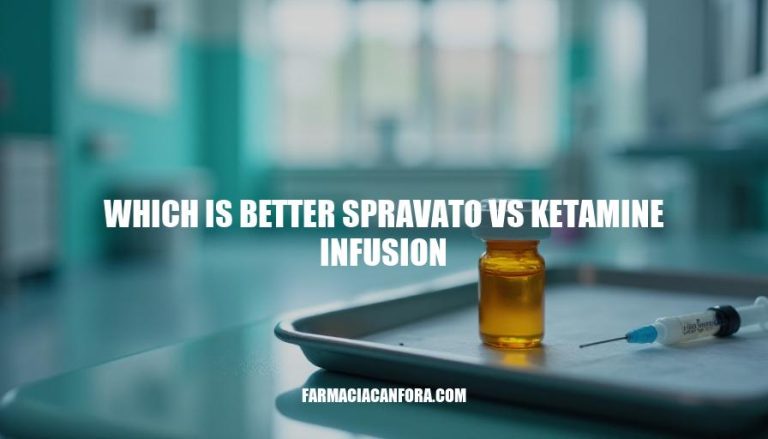


Comparing Spravato and ketamine infusion is crucial for those battling treatment-resistant depression. Both treatments offer hope where traditional antidepressants fall short, but they differ in administration and effectiveness. Understanding which option is better can guide patients and healthcare providers in making informed decisions for optimal mental health outcomes.
When comparing Spravato (esketamine) and ketamine infusion for treating depression, both have shown effectiveness, but there are some differences in clinical outcomes and patient response rates.
Spravato is administered as a nasal spray and is FDA-approved for treatment-resistant depression and major depressive disorder with acute suicidal ideation. It is often combined with an oral antidepressant. Clinical studies indicate that Spravato can provide rapid relief from depressive symptoms, but it may require multiple treatments over time.
Ketamine infusion, on the other hand, is administered intravenously and has been used off-label for depression for many years. It tends to have a higher response rate and quicker onset of action compared to Spravato. Patients often report significant improvement in depressive symptoms after just one or two infusions.
In terms of patient response rates, ketamine infusions generally show higher response and remission rates compared to Spravato. However, Spravato is more convenient for some patients due to its nasal spray form and insurance coverage.
Ultimately, the choice between Spravato and ketamine infusion may depend on individual patient needs, preferences, and accessibility to treatment options. Both treatments offer promising results for those struggling with treatment-resistant depression.
Spravato is administered as a nasal spray. Patients self-administer it under the supervision of a healthcare provider, eliminating the need for an IV line. This method is straightforward and less invasive, making it a convenient option for those who are uncomfortable with needles.
Ketamine infusion, on the other hand, is administered intravenously (IV). This involves placing an IV line and delivering the medication over a period of 40 to 60 minutes in a clinical setting. While effective, it requires more time and the presence of medical staff to monitor the infusion.
In terms of convenience and patient preference, Spravato often has the edge. The nasal spray is less invasive and can be more comfortable for patients, especially those who have a fear of needles. Additionally, the administration process is quicker and less cumbersome compared to setting up an IV infusion. However, some patients might prefer the IV infusion due to its longer history of use and the immediate supervision it provides during administration.
Spravato (esketamine) vs. Ketamine Infusion: Side Effects Comparison
Spravato (Esketamine)
Ketamine Infusion
Assessment for Patient Safety
Overall, Spravato may be considered safer for patients due to its milder and more manageable side effects. However, individual responses can vary, and treatment should be tailored to each patient’s specific needs and medical history.
Spravato (Esketamine):
Ketamine Infusion:
Economic Perspective:
When comparing Spravato (esketamine) and ketamine infusion for treating depression, both have shown effectiveness, but there are differences in clinical outcomes and patient response rates.
Spravato is administered as a nasal spray and has a higher likelihood of insurance coverage, making it more accessible. However, its side effects are generally milder, but may require multiple treatments over time.
Ketamine infusion, on the other hand, tends to have a higher response rate and quicker onset of action, but can be more invasive and expensive.
Ultimately, the choice between Spravato and ketamine infusion depends on individual patient needs, preferences, and accessibility to treatment options.
Based on the comparison, Spravato may be considered safer and more convenient for patients due to its milder side effects and higher likelihood of insurance coverage. However, ketamine infusion may be a better option for those who require rapid relief from depressive symptoms or have tried other treatments without success.
It is essential for patients to consult with their healthcare provider to determine the best course of treatment for their specific needs.